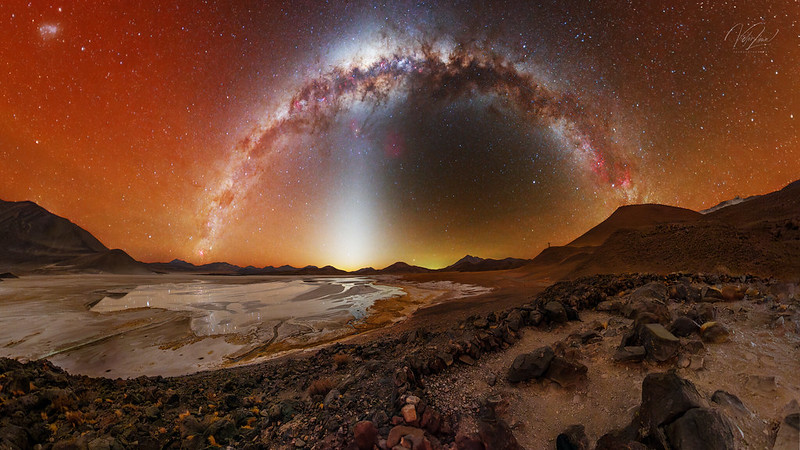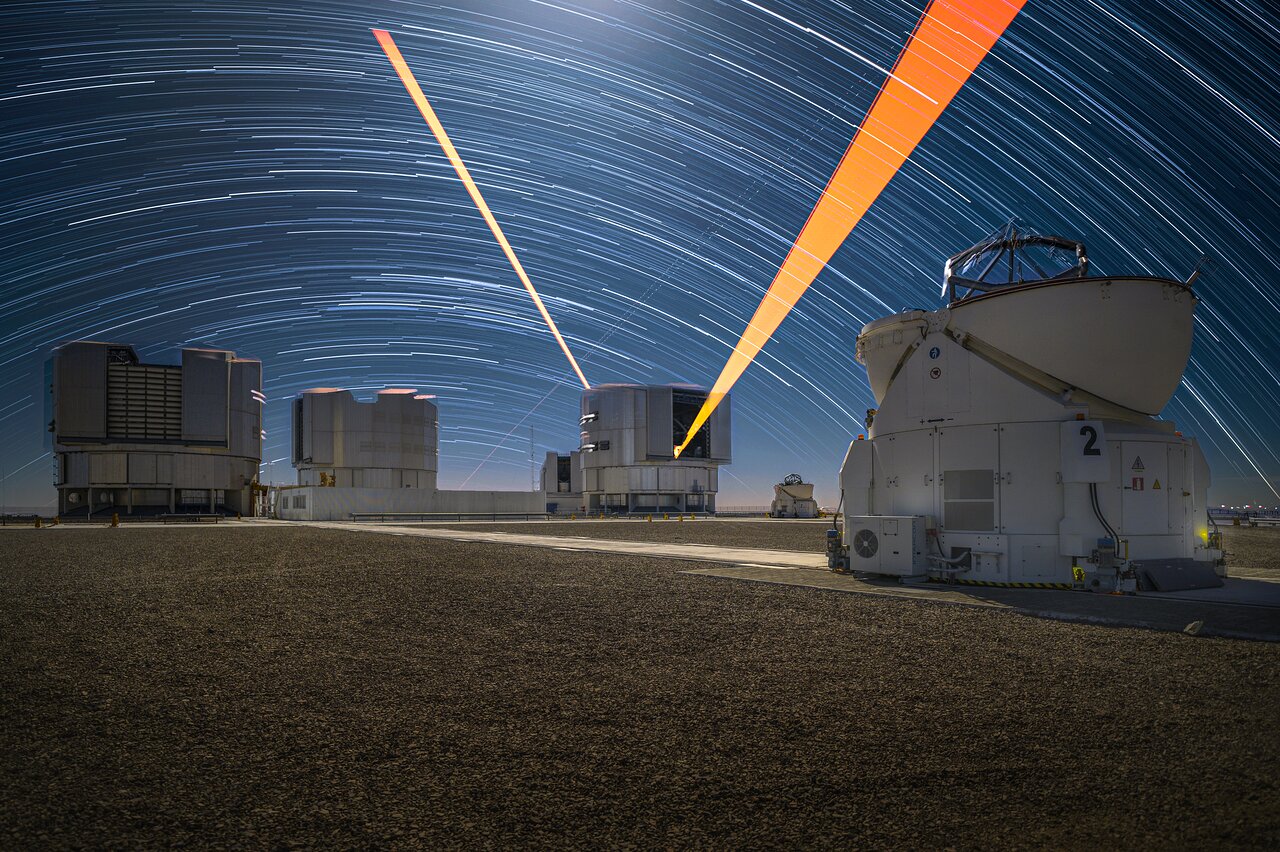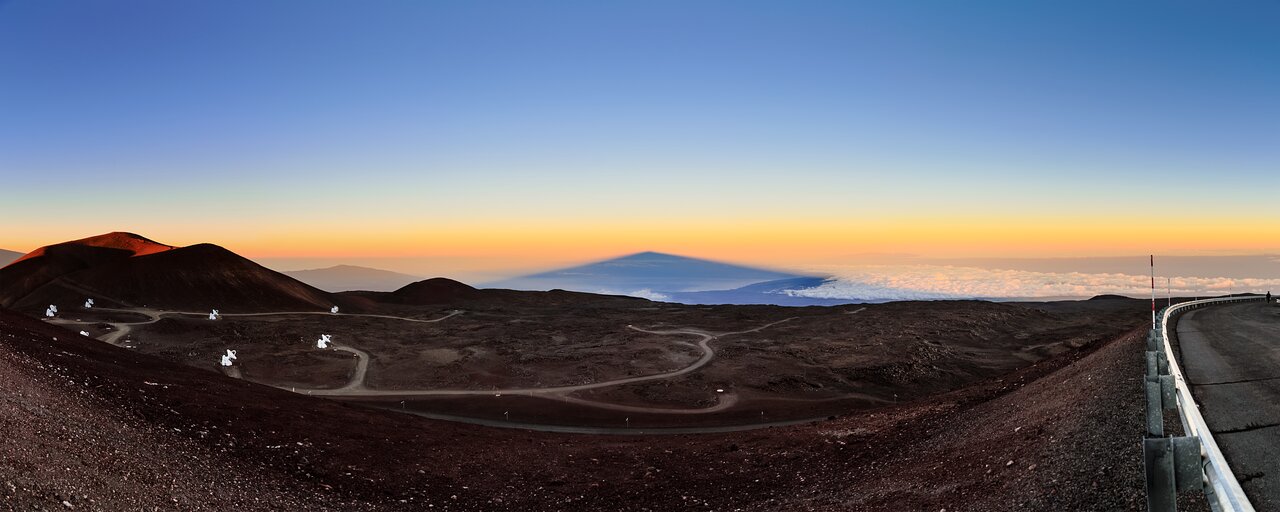ESA Hubble Picture of the Week | 2023 Sep 18
This Hubble Picture of the Week — taken using NASA/ESA Hubble Space Telescope’s Advanced Camera for Surveys (ACS) — shows Arp 107, a celestial object that comprises a pair of galaxies in the midst of a collision. The larger galaxy (in the left of this image) is an extremely energetic galaxy type known as a Seyfert galaxy, which house active galactic nuclei at their cores. Seyfert galaxies are notable because despite the immense brightness of the active core, radiation from the entire galaxy can be observed. This is evident in this image, where the spiraling whorls of the whole galaxy are readily visible. The smaller companion is connected to the larger by a tenuous-seeming ‘bridge’, composed of dust and gas. The colliding galactic duo lie about 465 million light-years from Earth.
- A pair of merging galaxies. The galaxy on the left has a large, single spiral arm curving out from the core and around to below it, with very visible glowing dust and gas. The right galaxy has a bright core but only a bit of very faint material. A broad curtain of gas connects the two galaxies’ cores and hangs beneath them. A few small stars and galaxies are scattered around the black background. (Credit: ESA/Hubble & NASA, J. Dalcanton)
Arp 107 is part of a catalogue of 338 galaxies known as the Atlas of Peculiar Galaxies, which was compiled in 1966 by Halton Arp. It was observed by Hubble as part of an observing programme that specifically sought to fill in an observational ‘gap’, by taking limited observations of members of the Arp catalogue. Part of the intention of the observing programme was to provide the public with images of these spectacular and not-easily-defined galaxies, and as such, it has provided a rich source for Hubble Pictures of the Week. In fact, several recent releases, including this one and this one, have made use of observations from the same observing programme.






